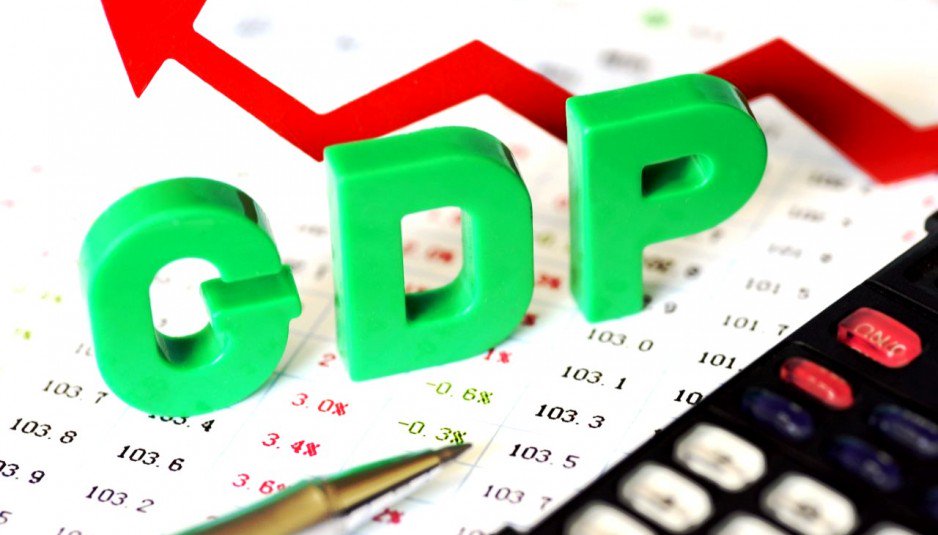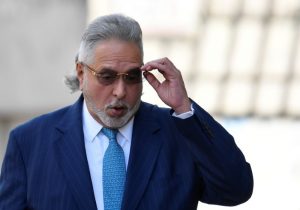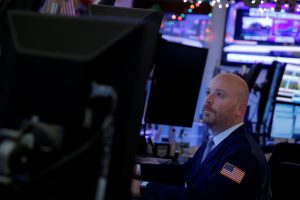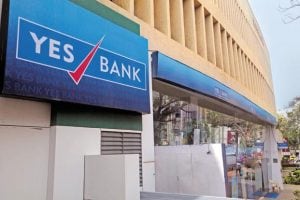Reports of Rana Kapoor eyeing chairman seat taken out of context, says Yes Bank’s Rajat Monga

KV Prasad Jun 13, 2022, 06:35 AM IST (Published)
 Listen to the Article (6 Minutes)
Listen to the Article (6 Minutes)
Summary
As the exit of Rana Kapoor, MD and CEO of Yes Bank, nears amid the rise of allegations of compliance and corporate governance failures in the bank, Monga said there is no pressure on Kapoor to reduce his stake in the bank. Monga, who serves as senior group president of Financial Markets at Yes Bank, also said the reports of Kapoor eying chairman seat has been taken out of context.
Rajat Monga is senior group president of Yes Bank and served as the chief financial officer and its whole-time director since June 28, 2013 until 2014. Monga is spearheading the financial markets, financial institutions relationship management and investment management practices in the bank. As the exit of Rana Kapoor, MD and CEO of Yes Bank, nears amid the rise of allegations of compliance and corporate governance failures in the bank, Monga said there is no pressure on Kapoor to reduce his stake in the bank. He also said the reports of Kapoor eying chairman seat has been taken out of context. In a wide-ranging interview to CNBC-TV8, Monga discussed the Yes Bank’s strategy and clarified on the recent downgrading by rating agencies and said that the Reserve Bank of India (RBI) has access to all the information.
Watch the full interview here.
Edited Excerpts:
I will straightaway pick up all the clarifications that investors want. The first one is about Yes Capital and Morgan Credits. Having invested in finance companies – indirectly they put it in ART Capital which went into ART Housing – some of the directors in that lending company are from the promoter’s family. Was RBI aware of it because there are certain rules regarding that? So did you ask RBI?
Let us look at the circumstances and the facts first. RBI has access to all information including this. Structurally, these companies are independent of the bank. It is not right to call them group companies, they are promoter companies. So they are the group companies of the promoter structure, so they are not the group company of the bank.
There is no interest or dealings of the bank with these companies. Rana Kapoor, who is our CEO as well, has already conveyed his ownership in these entities to his family. So he himself has no interest in those entities either.
Kapoor does not have any interest in Morgan Credits or Yes Capital.
That is correct. So his ownership does not have any linkages to those two entities. Those two entities are entirely his family’s entities and the bank has no relationship with those companies and therefore do not entitle to be called group companies in the nature that we were discussing.
The business interest of the companies are independent, they are subject to the owners there in terms of what they are likely to do. You will also see in the industry otherwise also such interest coexists between banks and some distant companies who have common ownership between their promoters. In fact, these companies that we are talking about are also very nascent in their business models. So it is also irrelevant in terms of their context as far as the bank is concerned.
All directors and promoters or promoter group companies have to declare the interest to the bank on an annual basis, the bank examines those interest on an annual basis, the bank also certifies to RBI that we have found them to be fit and proper. The RBI also looks at this document and these facts when they visit us for their annual reviews. So this has been done with all necessary legal and technical approvals.
Since you said that these are recent and nascent companies after they invested, there was an RBI inspection, so the central bank did run its eye over those papers?
Let us say business is nascent maybe in terms of outcomes, companies are not. In fact, these two companies, which are promoter group entities, also have been approved by RBI at the time of genesis of these companies.
How much has the business been impacted purely in terms of retail? Have you seen people shifting their account from Yes Bank to any other account? Has that started to happen?
All that has not happened at the bank. So the closest development of the bank is that we are undergoing a CEO succession. So, a lot of the developments are outside the bank and some of them are at the level of the board.
As far as the bank’s deposits are concerned or liquidity is concerned – if I may just give you a very high-level statistics so that we can then discuss the fineries of that – our time deposit book which is fixed deposit book from three months ago is up by 6 percent. Because three months ago, we were quite divided of such news and we have had some changes to be made since then.
Our savings account book is also up 6 percent from three months ago, our current account book is up 4 percent. The book that did go down is our CD book (certificates of deposit) because mutual funds (MFs) began to lose their liquidity, so we have been happily paying them back and our CD book has halved from its three-months ago peak. So, it is in the right direction in terms of how that deposit flow is looking.
As far as liquidity is concerned, we express that in a summary measure, we call that liquidity coverage ratio (LCR). Our LCR off late is in 107-108 percent range. When we last discussed this around our results, it was in the 100 percent range so liquidity has gotten better.
However, the customers do have the discretion to exercise and we have to honour it. Our obligation with the customer is to give them their money back whatever the circumstances are. Thankfully, in all of this, the bank’s fundamentals are still intact, I would say strong. They are as good as if you remove the newsflow, you look at the bank’s business outcomes, you may want to forget the newsflow.
That is good to know that the fundamentals are intact but the other big concern that shareholders have had is the exposure that Yes Bank has to NBFCs and HFCs perhaps even to developers. Can you share some numbers for us, what exactly is the exposure, you have spoken about the Rs 2,600 crore exposure you have to the IL&FS group but what else?
We have given all the disclosures along with our quarterly financials including semantics of those exposures. Let me try and go through it a little bit again. Let us start with the HFCs, our exposure is 3.2 percent and when I say exposure, it includes all forms of risks that we may have exposure to loans or bonds or of the balance sheet. So it is all in the entirety.
This portfolio is rated AA or better for 90 percent of the constituency of this portfolio, which is the HFC portfolio. HFCs and NBFCs have been through some liquidity challenges in the recent past. The correspondences and the conversations in NBFCs have been already very low over the last three weeks, so it is over in terms of the short-term challenge that NBFCs and HFCs were facing, which was the rollover of their short-term instruments and banks including us have stepped up to be able to carry them through their point of challenge because the fundamentals of their business again are not as impacted as it has been on their liability side.
So the next portion of our book will be NBFCs, which is about 2.6 percent of our total exposure. While HFCs do have much higher rating profiles, the NBFCs do have a stagger of rating. So our portfolio there is about 90 percent more than A or better.
So if you look at the portfolio from some statistics, it is quite good in terms of asset quality metrics.
Realty, developers?
Developers, again as part of our third quarter disclosures we had indicated an exposure mix of 5.6 percent to developers and zero SMA II. So we have not a single loan to a developer which is extending beyond 60 days in terms of payment delinquencies.
It is mostly construction financing. We are largely sole lenders, so the bank is in full control of the outcomes. We are not dependent on other lenders providing any financing or not. So, these are portfolios, in fact, also will be today a good opportunity to look at developer financing because of the otherwise sort of situation that is prevalent. Nothing has changed in realty sector.
What is the rating of the companies, for the others you gave A rating?
Realty companies will be mostly investment grade ratings because of the nature of risk in construction or project financing. These ratings at a project level will be close to BBB, some up, or thereabouts.
Since you work so closely with Rana Kapoor do you think there has been now quite a bit pressure on Rana Kapoor to perhaps sell his stake? The way the stock has fallen, it has been talked about, and Rana Kapoor has tweeted that he has no intentions to absolutely sell even a single share, but do you think there is a lot of pressure on him to sell down his stake.
There should not be any pressure on him to sell down his stake. In fact, we believe him when he says that he will stay put on his holding. Why should there be pressure, I am not sure if I am understanding the question well, but he will know that these are times where there is deep value in the valuation and the share has corrected quite a bit.
In fact, these are opportunities for us to sustain through these times, focus on the bank’s fundamentals which as I was mentioning continue to be strong, and this change that we are going through is only a matter of weeks. There are line-ups of board meetings, there are line-ups of outcomes which should be able to also set it back to a path which it was always following.
Just a detail on, since you spoke about Rana Kapoor – there was talk that in that peace accord with the family about he becoming chairman – is that possible at all under the rules?
I think that has been misread or misunderstood. There is a context in the bank’s articles, if you go back 15 years ago, it might be now a little bit out of the context, if you remember late Ashok Kapoor was the bank’s non-executive chairperson when the bank started. The articles, therefore, provided for those positions at that point in time. However, the current regulatory framework is very different. So a few years have gone by, and you will notice with most private sector banks that the only person who can be a bank’s chairperson is someone who is independent and naturally someone who is of eminence.
It is something which is in my opinion being read out of context because it might be of a structure of the past but the current context of the structure is very different.
Rating agencies have cut the credit ratings citing governance concerns, ability to raise capital etc. What would be the capital raising plans and in the near future will you tap the markets to raise funds?
So the rating agencies while they have taken a notch downgrade or cut ratings, they are also re-highlighting the fact that the bank’s fundamentals whether they are credit fundamentals, liquidity, deposits, have all been stable. Naturally, there is a transition phase that the bank is undergoing where we have more work to do in terms of supplementing the board back to its strength.
We are looking to appoint a chairperson. We are also undergoing a CEO search, so it is mostly in that uncertainty that rating agencies have looked at what they had to. It is not, I would not say it is a matter of corporate governance because we still need to beef up the people who govern us. So it is that part which we have to fulfill. I think I am sure the ratings will also re-balance and re-store once some of these uncertainties also become more certainty.
As far as capital raising is concerned, I think the bank is already enabled by the shareholders to raise an amount of up to $1 billion. I think it will make more sense for us to look at that opportunity once these current uncertainties have been made more certain so that the capital raising can logically follow.
So you will raise capital only after January 31?
There it depends on what the timelines are and how they pan out. The capital ideally should be looked at when the bank structure the fully supplemented board and the succession of the CEO is largely complete in its format. We don’t have to wait for everything to be fully completed.
It could be that we already have CEO announced and maybe the CEO is underway in terms of joining, so capital options remain open. I think it will also be a function of how the market opportunities appear at that point in time. If the growth continues to be robust which is likely and the bank is back in its true form, I think the capital will be in order also to then look at growth opportunities that are presenting themselves at that point in time.
What is the capital adequacy now?
Our total capital adequacy is 17 percent, so we have plenty of capital. There is also a good growth opportunity. So I think there is a continuous need for the bank to balance, as we grow capital gets consumed and if the growth is continuing to be that we want to seek out then there will be a need to supplement the bank capital resources which we have been doing.
If I take you 15 years ago the bank started with the capital of Rs 200 crore. Today, we have a total capital of Rs 51,000 crore. So, it has been a lot of capital activity, we have been a public listed company for the last 14 years now. We have had several rounds of raising equity tier II, additional tier I, so we have all forms of capital and we have tested all of them over the last many years.
Referring to newspaper Mint’s article today there is a letter they are quoting saying that in April, RBI wrote to you saying that they found highly irregular credit management practices, serious deficiencies in governance and a poor compliance culture. At that time the divergence was already over, so what are they referring to?
This is effectively referring to divergence.
The annual inspection happened in June…
Let me clarify, I have not seen this correspondence, so I am also reading it in the press. If there was such a correspondence, it is very likely private correspondence/confidential correspondence between the regulator and the Bank’s board. The RBI looks at us when they come for annual review and they have identified differences of opinion with how the bank has managed the lifecycle of certain of its loans and what their view on that subject is.
So this correspondence emanates from the fact that there were differences of opinion in that. So the various nomenclatures that you were reading are all essentially semantics of divergence itself. Divergence is a more commonly used word. So the RBI is referring to the same facts that there have been observations or divergence in the bank’s loan management. The bank has already taken several corrective actions to change that.
So, naturally, changes are happening. One consequence has also been that the CEO succession had to be carried through. We are also making changes at the board such that these are corrective strengthening outcomes that the bank is taking. We are also making changes in how we are managing the lifecycle of our loans.
So divergence has not been a credit issue. So it has not been a risk management outcome issue. It is more or less a compliance issue which again is not necessarily. I would want to take some benefit of the doubt of the fact that it was a difference of understanding.
There must have been other inspection in June this year, the results are not out?
The annual inspection took place in the second quarter, we do not have the results of that exercise by the regulator till now.
The other letter Mint is referring to is that they had asked the board to claw back some of the benefits given to Rana Kapoor for the year 2015-16 because of the divergences I would assume and they cut up that when extension was requested by the board, there was no reference to the fact that the RBI has asked for the clawback that what led to Kapoor not getting an extension and why was the clawback not done?
If you refer to Base III guidelines, the context of clawback relates to bonuses and management compensation. So the philosophy with Basel III is that we should not encourage managements to take risks, take home bonuses and then go to other jobs and not worry about consequences.
So the first thing with Basel III, including RBI introduced that any significant management compensation like bonuses have to be deferred, they cannot be paid in one tranche. The board or the management then has the ability to claw back those bonuses, in that case, the risks pan out to be unsatisfactory.
Our situation is not clearly in that direction because the risks have not panned out to be in the direction which is clearly adverse, our NPA ratios are still top 3, top 4 in the country. The bank’s performance on the return ratios has been reasonably acceptable to most and that was reflecting our stock price as well.
So bonus is something which in our judgement or the board’s judgement in this case would have related to outcomes and therefore the debate whether the board should have clawed back and how do you reflect this philosophy in your actions, that is what has been a difference of opinion and we know who wins in that difference of opinion. If we know that the regulator is expecting that this has to be done, it will be done
Since we are on the subject of NPAs, in the quarter gone by as well there was some deterioration that we saw quarter-on-quarter. You did explain that saying that there was one big Rs 600 crore account because of which the slippages went up quite a bit, but how are the next few quarters looking? Do you see further pressure?
Asset quality is a subject which will always leave some pressure behind. I think we have discussed on our last meeting in the studio on IL&FS particularly. If I leave IL&FS aside because that has been put into some suspended animation given that it is subject to court directions, the rest of the outcomes look in my opinion I would hazard a guess that they should be better than the first half as far as the second half asset quality outcomes are concerned.
When we get the RBI report, we do not expect it to have any significant flow through into either NPAs or credit cost. However, the caveat that I was making continues to be IL&FS because we still do not know what the court directions will be finally on the matter. At the moment, IL&FS is under the courts administration process.
When do we hear of the chairman’s announcement?
The job is being carried out. I think we will have to allow that process to be complete, including an appointment. I go back to our first discussion on this chat, the appointment of directors, we have to go through the process of taking hold of what all their interests are, what has been their past assignments, have there been any pecuniary relationships directly or indirectly with the bank so that the independence has to be ensured.
So if there is a person let us say who was employed in a company which was a client of the bank, and if he was in a senior decision making position, that is a conflict of interest. We have to look at those, examine all of them.
So it is not something we can simply conclude overnight. So this process has to be followed. I am of the opinion and what I am also hearing and observing, I am not doing the appointment process, so do not misunderstand me, but we should be looking at an eminent person who is independent in all rights.
I have to ask you this, yesterday Nandan Nilekani was on everyone’s lips, so can you confirm or deny?
No, I will not be in a position to comment.

Elon Musk forms several ‘X Holdings’ companies to fund potential Twitter buyout
3 Mins Read
Thursday’s filing dispelled some doubts, though Musk still has work to do. He and his advisers will spend the coming days vetting potential investors for the equity portion of his offer, according to people familiar with the matter

KV Prasad Journo follow politics, process in Parliament and US Congress. Former Congressional APSA-Fulbright Fellow










 Listen to the Article
Listen to the Article  Daily Newsletter
Daily Newsletter












